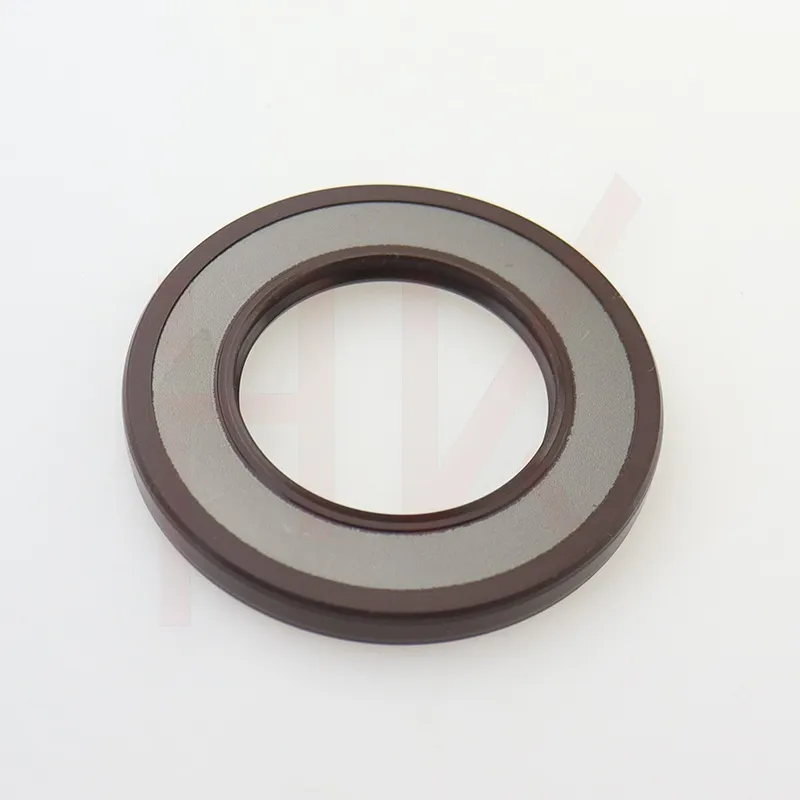نويابىر . 30, 2024 00:56 Back to list
Understanding the Function and Importance of Oil Seals in Machinery
The Purpose of Oil Seal An Essential Component in Machinery
Oil seals, also known as oil or grease seals, are crucial components used in various types of machinery and mechanical systems. Their primary purpose is to prevent the leakage of lubricants while simultaneously protecting machinery from dirt, dust, and moisture. This article delves into the myriad functions of oil seals, the materials used in their construction, their applications, and the importance of choosing the right seal for specific tasks.
Understanding Oil Seals
Oil seals are characterized as circular seals made from elastomers or thermoplastics. They are designed to fit tightly within a housing and typically consist of four main components a sealing lip, a garter spring, a body, and an inner or outer diameter, which varies according to application needs. The sealing lip is the component that comes in contact with the rotating shaft, providing a barrier against contaminants while maintaining the lubricant within the system.
Primary Functions of Oil Seals
1. Preventing Lubricant Leakage The foremost purpose of an oil seal is to contain lubricants such as oil or grease within machinery. This is vital for ensuring the longevity and efficiency of mechanical components. Without an effective seal, lubricants would leak out, leading to friction, wear, and potential system failure.
2. Protection Against Contaminants Oil seals act as barriers against dirt, dust, moisture, and other foreign particles that could otherwise penetrate the machinery. Contaminants can severely impair performance by degrading the lubricant and causing abrasion on surfaces. By preventing the ingress of these harmful materials, oil seals enhance the overall reliability and lifespan of mechanical systems.
3. Maintaining Pressure In certain applications, oil seals help maintain the internal pressure of systems, which can be critical for optimal performance. This is particularly important in hydraulic and pneumatic applications, where pressure fluctuations can lead to inefficiencies and operational failures.
4. Reducing Friction and Wear By ensuring that the appropriate amount of lubricant is contained within the machinery, oil seals play a role in reducing friction between moving parts. This not only enhances performance but also minimizes wear, thereby extending the lifespan of the entire system.
Materials Used in Oil Seals
what is the purpose of oil seal

The effectiveness of oil seals depends significantly on the materials from which they are made
. Common materials include- Nitrile Rubber (Buna-N) This is the most widely used material for oil seals due to its excellent resistance to oil and abrasion. Nitrile seals can withstand a broad range of temperatures and are used in various applications, including automotive and industrial machinery.
- Fluorocarbon (Viton) Fluorocarbon seals are known for their superior resistance to high temperatures and aggressive chemicals. They are often used in environments where traditional materials might fail due to harsh conditions.
- Polytetrafluoroethylene (PTFE) Often used for its low friction properties, PTFE oil seals can also handle extreme temperatures and chemicals. They are ideal for applications where minimal friction and heat generation are crucial.
Applications of Oil Seals
Oil seals are utilized in various applications across multiple industries. In automotive engineering, they are found in engines, transmissions, and differential systems. In industrial machinery, oil seals are common in gearboxes, pumps, and compressors. Even in household appliances like washing machines and refrigerators, oil seals perform vital functions in maintaining efficiency and performance.
Importance of Choosing the Right Oil Seal
Selecting the appropriate oil seal is paramount for optimal functionality. Factors to consider include the type of lubricant involved, the operating temperature range, the speed of the shaft, and the external environmental conditions. Choosing the wrong seal can lead to premature failure, increased maintenance costs, and significant operational downtime.
Conclusion
In summary, oil seals are an integral part of machinery that serve several purposes, from containing lubricants to protecting against contaminants. Understanding their functions, the materials used in their manufacture, and their specific applications is essential for anyone involved in mechanical engineering or machinery maintenance. By ensuring that the right oil seals are selected and properly installed, we can enhance mechanical performance, reliability, and longevity.
-
Unlocking the Potential of Hydraulic Systems with Essential Sealing Solutions
NewsAug.06,2025
-
Unleash the Power of Your Hydraulic Systems with Our Premium Seal Kits
NewsAug.06,2025
-
Specialized Hydraulic Seal Kits for Breakers, Pistons, and Presses
NewsAug.06,2025
-
Revitalize Hydraulic Systems with Premium Repair and Seal Kits
NewsAug.06,2025
-
Fortify Your Cylinders with Premium Sealing Solutions
NewsAug.06,2025
-
Elevate Hydraulic System Reliability with Specialized Seal Kits
NewsAug.06,2025
-
TCN Oil Seal Metal Ring Reinforcement for Heavy Machinery
NewsJul.25,2025
Products categories
















